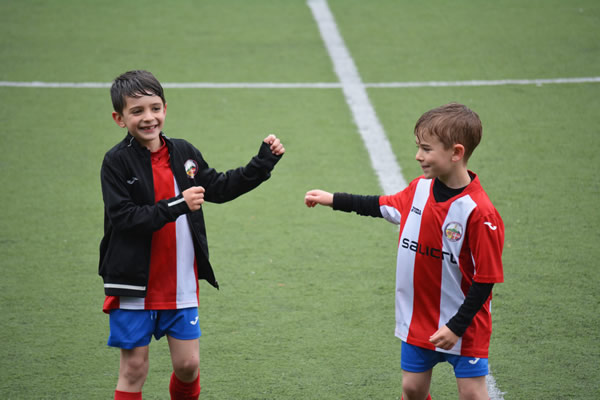Kids grow in their own time, with each individual body on it’s own clock, regardless of birthdays and chronological years passed.
The best illustration of this is to look at a group of kids anywhere between the ages of 10 and 16. You can easily select two boys both aged 14, with an early grower who already looks 18 and a late bloomer who still looks 12. The exact same phenomenon exits in girls, some reaching puberty at age 11-12 while others can wait until much later.
Whilst statistics and data will give us the average age for puberty this information has little relevance to the individual child who is dealing with issues of early or late growth, desperately wanting to fit in with their peers.
In sports this situation can be exacerbated with certain sports favouring early growers who exhibit better skills and body size, particularly height. Whilst these kids can have early success in sports, this is often challenged when others catch up, and they lose the developmental advantage.
For the late bloomers they can become disillusioned with their sport, despite being skilled they may be overlooked by coaches and selectors. This is the fault of the sports codes themselves, not the kids. As a parent it is important to understand this and focus on the development of your own child, not comparing them to others.
Too many sports are failing to consider the development of their juniors and the individuality of growth. The other big issue here is the injury risk for kids in sports. Body size and skill level pose serious risks at all levels of sports participation.
The lessons kids learn from sports are valuable, and we need to encourage them to participate. Being active, learning to cooperate and collaborate with peers, learning to win and lose with humility, and understanding that commitment and practice improves skills. These are all essential factors for our physical, emotional and social development.
Kids and parents also need to understand that skills can go through a slump during an active period of growth. Whilst a tennis player may be amazing at aged 12, having developed a high level of skill and coordination, things can go wrong once they start to grow. Longer arms and legs, hormone changes, mood changes, can all affect performance. It’s a matter of biology and physics, and cannot be fixed by more practice and determination. Frustrating as this can be for the child, parent and coach, they need to learn to adapt to their new body parameters with patience and appropriate training levels for development.
The most important thing to remember is patience. Overloading junior athletes will not make them champions. It increases the risk of injury and burnout. Take the time to let them develop slowly with skills and appropriate levels of trainin

